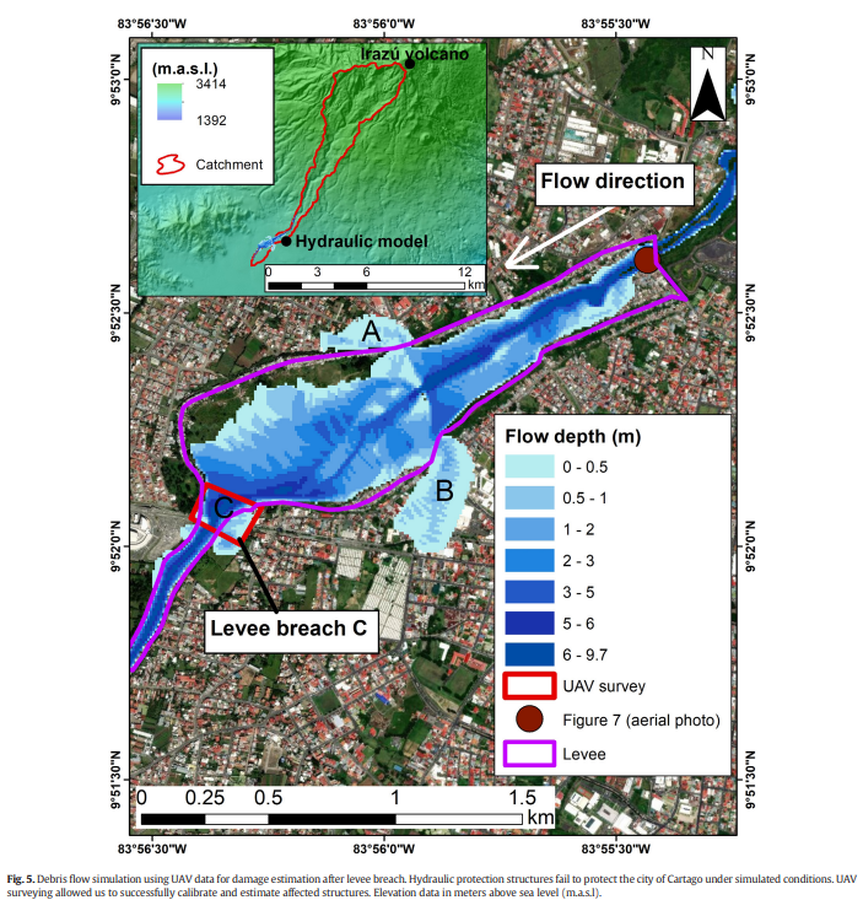Debris flow simulation using UAV data for damage estimation after levee breach
Irazú, Costa Rica, 2021
Figure 5 in: Granados-Bolaños, S., Quesada-Román, A., & Alvarado, G. E. (2021). Low-cost UAV applications in dynamic tropical volcanic landforms. Journal of Volcanology and Geothermal Research, 410, 107143.
This hazard map is the result of scientific research and was published in academic literature.
It is presented here to serve as an example of the map type or the map-making methodology. It is NOT the official, operational map. For the current operational hazard map, please consult the proper institutional authorities.

Click on thumbnail for full-size map. We do not have copyright permission to display the full-size image. If you are the copyright holder and wish to provide copyright, please contact us at admin@volcanichazardmaps.org. If link seems broken, try the archived version.
Map Data
Map ID 4037 Hazard Process(es) Lahars Hazard Zone Presentation Single hazard: A single hazard process is represented on a main map panel Temporal Scale Background, or long-term, map Spatial Scale Part of volcano (flank or drainage) Publication Format Figure in a journal article Zonation Method(s) Scenario modeling Zonation Model(s) FLO-2D (O'Brien 1993) Scenario(s) Considered Size, VEI, or intensity; Style or type Hazard Zone Label(s) Estimated value or Hazard Impact Metric Probability Definition(s) No probability definition was discernable from the map Purpose Scientific interest: Intended for scientific research and general scientific interest; usually published in academic journals Audience Scientists (usually in scientific publication) Language(s) English Basemap(s) Photograph Basemap overlay(s) Diemsionality Planimetric (2D or map) view Color Scheme Dark to Light (color)
